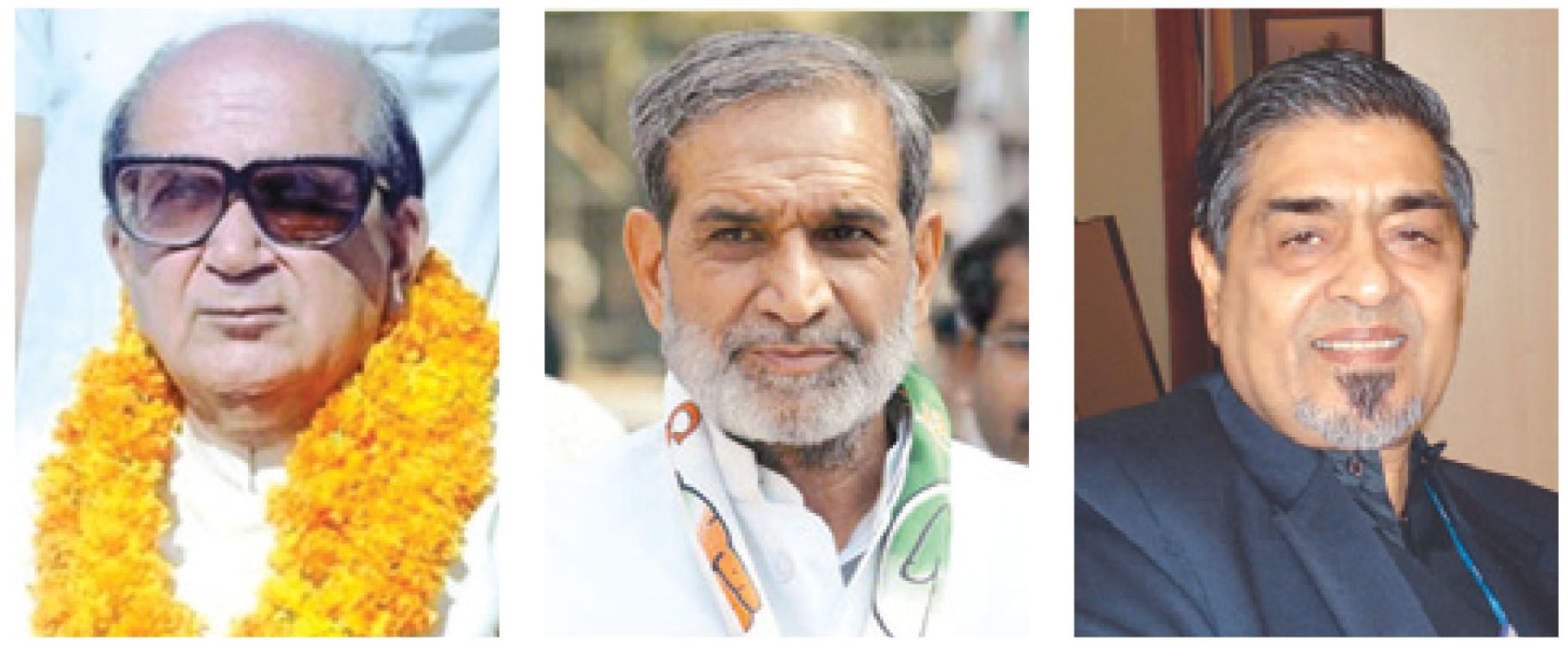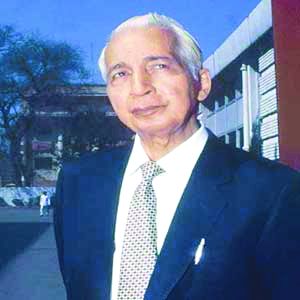Above: Family members of 1984 anti-Sikh riots victims stage a protest in Amritsar. Photo: UNI
The Supreme Court’s decision to constitute an SIT to re-examine 186 closed cases linked with the 1984 riots has rekindled hope among the victims, but will it lead to any breakthrough?
~By Puneet Nicholas Yadav
For Sardar Gurlad Singh Kahlon, the Supreme Court’s decision to accept his plea for re-opening 186 cases linked to the 1984 anti-Sikh riots has rekindled hope that justice is finally within reach.
A three-member Special Investigation Team (SIT) headed by Justice SN Dhingra, a retired judge of the Delhi High Court, was constituted on January 11 by the Supreme Court in response to Kahlon’s plea and will be the 11th panel to probe the riots.
In the more than 33 years that have passed since the mass killings claimed 3,300 lives, as many as 10 committees, teams and commissions have been constituted by successive governments and the Supreme Court to probe the riots. Most have only added insult to injury for the likes of Kahlon, giving them a ray of hope before dashing it as farcical probes got underway.
Will the new SIT, also comprising IPS officer Abhishek Dular, currently on central deputation with the CBI, and Rajdeep Singh, who recently retired as Special DG of the BSF, be able to deliver the much-delayed justice? The 186 cases transferred to this panel are from a bunch of 199 that another SIT—appointed in February 2015 by the Modi government and headed by IPS officer Pramod Asthana—had recommended for closure, along with 42 other cases that a Supreme Court-appointed supervisory committee had examined.
One has to bear in mind that after over 33 years, many witnesses and even the accused may either not be traceable or alive. Some victims may have moved on and not want to be reminded of old horrors. As such, there is the risk of this SIT hitting a dead end. Nonetheless, Justice Dhingra and his SIT colleagues will need to get down to business soon as the Supreme Court wants the panel to submit its interim report within two months, i.e. by mid-March.
But even a fortnight after the SIT was constituted, Justice Dhingra is waiting for a written notification formalising the constitution of the panel he is supposed to head. Neither is there any clarity on the terms of reference for the new probe nor which of the 241 shut cases would be re-opened.
In the 1990s, Justice Dhingra as a trial court judge had presided over several cases linked to the anti-Sikh riots. He had also famously incarcerated Congress heavyweight HKL Bhagat and awarded a death sentence to Kishori Lal, known as the “butcher of Trilokpuri” for his role in the massacre.
Even a fortnight after the SIT was constituted, Justice Dhingra is waiting for a written notification formalising the constitution of the panel he is supposed to head
Speaking to India Legal, Justice Dhingra confirmed: “I have not seen the SC order yet. I have to see what the terms of reference are. It is only after receiving the formal order and the terms of reference that I can determine the procedure to be adopted by us for the probe.” Asked whether he knew which of the total 241 closed cases his team had to re-examine, he said: “I don’t have any of these details yet.” But what he is sure of is this: “I can’t make the same mistakes that earlier SITs and inquiry commissions made.”
He added: “Once I have the details of the 186 cases that the SIT has to re-open, I will have to go through all the files individually to see what the report of the earlier SIT was. We will have to examine whether a genuine effort was made to find the culprits or was evidence actually missing…witnesses and accused will have to be tracked down if they are there.”
POLITICAL TREMORS
The re-opening of the cases will, undoubtedly, also have political ramifications as the riots broke out in the immediate aftermath of the assassination of then prime minister Indira Gandhi by her Sikh bodyguards. The alleged role of the Congress party and several of its leaders—the late Bhagat, and former MPs Sajjan Kumar and Jagdish Tytler, to name a few—has been under investigation for years and become a blot on the Grand Old Party.
HS Phoolka, a Supreme Court advocate who has been fighting a large number of court cases linked with the riots, believes that earlier investigations and court rulings in these cases “were biased and carried out not to ensure justice but to bail out the Congress and its leaders. At least in this aspect, things have changed now and we hope that the role of political leaders who were instrumental in organising the mass murder will finally be exposed by this new SIT”.
Is the Congress worried that the re-opening of the cases could dent its already dwindling electoral fortunes? Officially, the party has welcomed the SIT. Captain Amarinder Singh, chief minister of Punjab and a person who had famously quit as an MP in 1984 in protest against the riots—has welcomed the SIT. “It is high time justice be provided in these cases. More than 30 years have passed since the gory violence claimed many lives. While various commissions had been set up to investigate the cases, justice continues to elude the victims,” said Singh.

A senior Congress leader, speaking on condition of anonymity, told India Legal: “There is nothing more that the party wants than to have justice delivered in these cases. But the present political situation and the appointment of a pro-conviction judge on the recommendation of the Modi government raises some fear that this might turn out to be another politically motivated witch-hunt.”
However, Phoolka asked: “If a judge convicts an accused on the basis of evidence against him, how can there be a conflict of interest? I think anyone who questions the integrity of Justice Dhingra has no understanding of how the law functions.”
33 years, 11 inquiries

The Justice SN Dhingra SIT will be the 11th probe panel that will look into the 1984 riots cases. In 1985, then prime minister Rajiv Gandhi had appointed an inquiry commission headed by Justice Ranganath Misra to inquire into allegations of organised arson in Delhi, Kanpur and parts of what is now Jharkhand. The Justice Misra Commission had concluded that the violence was an involuntary reaction and that the Congress did not have a role in fanning it though some of its leaders participated in the pogrom “entirely on their own”. This Commission’s recommendation came in 1986.
Next, the Delhi administration appointed three committees on February 23, 1987—the Kapoor-Mittal Committee (to inquire into the conduct of the Delhi police), the Justice (retired) ML Jain Committee (to look into offences committed during the riots) and the RK Ahuja Committee (to establish the death toll in Delhi). It was the Ahuja Committee that recorded the death toll in Delhi at 2,733. In March 1990, the Delhi administration appointed a fresh committee of retired Gujarat High Court Chief Justice P Subramanian Poti and retired IPS officer PA Rosha with revised terms of reference. The committee was subsequently reconstituted and examined 669 affidavits that were filed before the Justice Misra Commission, besides 415 new affidavits and 403 FIRs recorded by the Delhi Police. The committee highlighted major lapses on the part of the Delhi police.
The first NDA government led by Atal Bihari Vajpayee appointed a commission led by former Supreme Court judge Justice GT Nanavati. In its report submitted on February 9, 2005, this commission indicted Congress leaders and workers for “helping the mobs in attacking the Sikhs” but recommended the re-opening of only four out of 241 closed cases.
Shortly after coming to power in 2014, the Modi-led BJP government tasked former SC judge Justice GP Mathur to examine the possibility of constituting an SIT to re-investigate the 1984 cases. A three-member SIT was formed on February 12, 2015, and headed by 1985-batch IPS officer Pramod Asthana. After three extensions and re-investigation of 286 cases, the SIT told the SC in March 2017 that it had closed 199 cases. After nearly three years of investigations it had filed chargesheets in only 12 cases.
On August 16, the SC appointed a panel comprising its former judges, Justices JM Panchal and KSP Radhakrishnan, to examine the Asthana SIT’s decision to close the 199 cases and referred another 42 closed cases to it.
ENOUGH EVIDENCE
But how will the new probe be any different from the 10 others that have been carried out earlier? Phoolka added: “We have to hope that it will be. The grievance of the (Sikh) community was that the SC didn’t do enough in all these years to secure justice for the riot victims. At least in that aspect, this is a right decision. Secondly, there is enough evidence on record to show that cases which were closed by the earlier SIT and many others which were probed by the CBI or the Delhi police were never properly investigated. Purely on this ground, a re-investigation is called for.”
He cited a riots case in Delhi Cantonment where one FIR was filed for 31 murders in 1984, but when the case was probed, the investigating agency filed its chargesheet in only five of the murders. Later, this case was shut because the agency could not produce even a single eyewitness in court for these five murders.
With less than 45 days left for it to submit its interim report and no communication yet on the terms of reference, it remains to be seen whether the hopes of the riot victims will be belied or are a harbinger of justice. For Kahlon, “even if justice is served in one of these 186 cases, I would feel some progress—even if only symbolic—has been made.”


